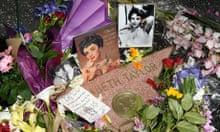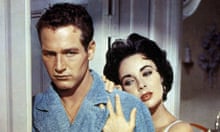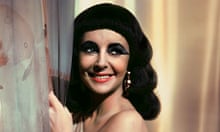The last public sighting of Elizabeth Taylor in a gay bar was on Thursday 11 September 2008, at The Abbey in West Hollywood. The screen icon, who had been dubbed 'The Joan of Arc of AIDS' in the early 80s, drank a martini and held court with four friends while staff looked after her maltese dog, Daisy. Rhinestone-encrusted sunglasses were positioned on her head by another assistant before she was wheeled back through the hushed crowd to a waiting, blacked-out sedan.
Perhaps the most astonishing detail of this sighting was that a straight woman of 76 still had a favourite gay bar. Perhaps not. It was Taylor, after all. The details of her special relationship with the gay population, right up until her death, are crucial.
During the Reagan presidency she was the first and most prominent star to align herself with Aids fundraising. The traction her star wattage lent Aids charities turned Taylor from a woman who naturally empathised with both the fragility and duality of gay men's political status in the US to a notable force in reversing them. At the 8th International Aids Conference in 1991, she said of the first President Bush: "I'm not even sure if he knows how to spell Aids." Her public pronouncements on the subject were bluff, profound and affecting. She raised millions.
For the last 25 years of her life, the fight against Aids became a vocation for Taylor. "I hope with all of my heart that in some way I have made a difference in the lives of people with Aids," she said. "I want that to be my legacy. Better that than for the mole on my cheek." And still some people wonder why Taylor is held in such deep and unique affection by gay men.
Taylor's relationship with gay men provided a new model of gay icon. No longer was it enough to be a woman with whom gay men retained a bass-note of empathy, the kind of strung out glamour/tragedy axis that Judy Garland immortalised. Taylor made herself useful, too. You can see parallels of her pioneering work in Madonna, Minogue and the cruder modern public discourse of Lady Gaga, who seems a little over-hasty to appoint herself into the role as allow the actual community to anoint her. Her feeling for camp was not an affectation or strategic marketing device, but something more innate and intuitive. Beneath the artifice, the martinis and the rhinestones, there was a human heart that many gay men just adored, quite unequivocally, and with ample reason.







